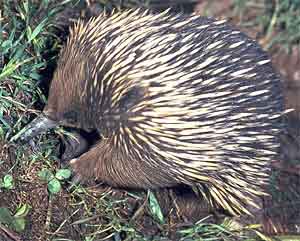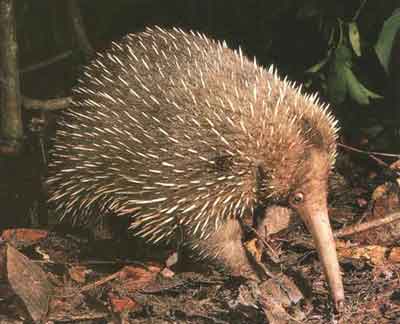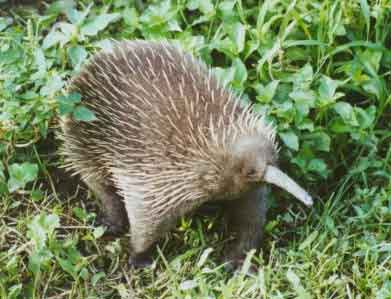Western long-beaked echidna zaglossus bruijni



Level of threat
This species is under severe threat. The Redlist calls it critically endangered and there has been an 80% decline in population levels within the last 40-50 years.
Conservation Efforts
This species is mostly dependent on earthworms in forest at high elevations for its sustenance so agriculture tends to reduce its natural environment. Further, in its native Papua, this species is considered a delicacy and limited hunting is permitted.
Bet you didn't know...
- Long-beaked Echidna's live almost solely on earthworms
- An Echidna's eloganted snout and tongue are used to forage hollow logs on the forest floor for their food.
- Long-beaked Echidnas live in the forest at higher elevations and is larger than its short-nosed cousin.
Behavior
The Long-beaked Echidna is also larger that the Short-beaked species, reaching up to 16.5 kg (36 lb); the snout is longer and turns downward; and the spines are almost indistinguishable from the long fur. It is distinguished from the other Zaglossus species by the three claws on the fore and hind feet. The species is listed as endangered by the IUCN; numbers have decreased due to human activities reducing habitat and hunting. The Long-beaked Echidna is a delicacy, and although hunting the species has been banned by the Indonesian and Papua New Guinean governments, traditional hunting is permitted. In February 2006, an expedition led by Conservation International reported finding a population of the mammals as part of what they described as a "Lost world" of wildlife in the Foja Mountains of Papua Province, Indonesia.